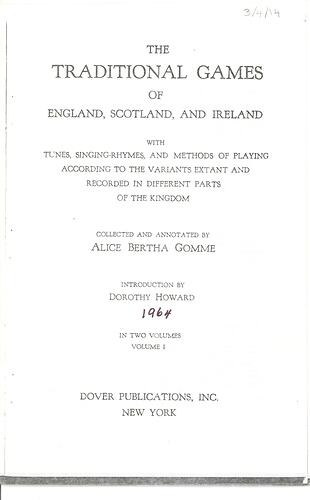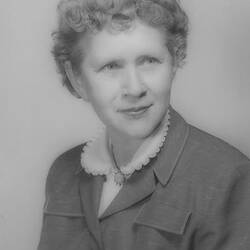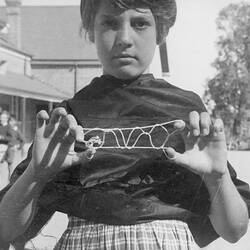Summary
Article titled 'Introduction to Dover Edition' by Dr Dorothy Howard and published by Dover Publications in 1964. The article is an introduction to Alice Bertha Gomme's two volume publication 'The Traditional Games of England, Scotland, and Ireland with Tunes, Singing-Rhymes, and Methods of Playing According to the Variants Extant and Recorded in Different Parts of the Kingdom', which was originally published in 1894-1898. Gomme's publication functions as a dictionary of children's games from Britain's Victorian era and it was originally intended to form Part One of 'A Dictionary of British Folk-Lore', however this plan was never realised.
Dr Howard's introduction provides general background information on Gomme, her husband fellow British folklorist Sir George Laurence Gomme, and her contribution to the field of children's folklore. Dr Howard also offers analysis of Gomme's field research. She states that the listed games were described by adults reflecting on their childhood play rather than observed by Gomme, and therefore only represent a small, literate population of polite society. Dr Howard reflects on the changing social position of children in subsequent decades. She considered the increased visibility of children's play and growing academic interest in their activities. She concludes by remarking on the value and significance of Gomme's publication, which provides an extensive record of children's games and insight into human behaviour.
One of a collection of publications about children's folklore written by Dr Dorothy Howard. Dr Howard came to Australia in 1954-55 as an American Fulbright scholar to study Australian children's folklore. She travelled across Australia for 10 months collecting children's playground rhymes, games, play artefacts, etc. The original fieldwork she collected during this period is held in the Australian Children's Folklore Collection (ACFC) at Museum Victoria and includes index cards, letters and photographs.
Physical Description
Article with typed black text printed on paper. Eight pages printed on one side only; two sheets have been folded in half to contain loose pages.
More Information
-
Collection Names
Australian Children's Folklore Collection, Dorothy Howard Collection
-
Collecting Areas
-
Acquisition Information
Cultural Gifts Donation from Dr June Factor, 18 May 1999
-
Acknowledgement
Donated through the Australian Government's Cultural Gifts Program.
-
Collector
-
Author
Dr Dorothy Howard, United States of America, 1964
In 1964, Dr. Howard wrote an introduction to Gomme's publication 'The Traditional Games of England, Scotland, and Ireland' which was reprinted by Dover Publications. -
Publisher
Dover Publications, New York, New York State, United States of America, 1964
Dover Publications reprinted Gomme's 'The Traditional Games of England, Scotland, and Ireland' with the addition of Howard's introduction in 1964. Gomme's book, which was out of print, was originally published between 1894-1898. -
Author
Lady Alice B. Gomme, England, Great Britain, 1894-1898
'The Traditional Games of England, Scotland, and Ireland' was collected and annotated by Alice Bertha Gomme. -
Editor
Sir George L. Gomme, England, Great Britain, 1894-1898
Sir George Laurence Gomme edited his wife Lady Alice Bertha Gomme's book. -
Person Named
Iona Opie, England, Great Britain, circa 1951-1959
Dr. Howard cites the work of British folklorists Iona and Peter Opie, circa 1951-59. -
Person Named
Peter Opie, England, Great Britain, circa 1951-1959
Dr. Howard cites the work of British folklorists Iona and Peter Opie, circa 1951-59. -
Person Named
Dr Brian Sutton-Smith, New Zealand, circa 1949-1959
Dr. Howard cites Sutton-Smith's study of children's play in New Zealand, circa 1949-59. -
Classification
-
Category
-
Discipline
-
Type of item
-
Overall Dimensions
143 mm (Width), 218 mm (Height)
Orientation: portrait
-
Keywords


